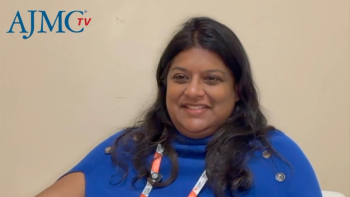
Benefits of Continuing Subcutaneous Daratumumab After Initial Quad Therapy: Pieter Sonneveld, MD, PhD
Pieter Sonneveld, MD, PhD, professor of hematology and chair of the Erasmus MC Cancer Institute in Rotterdam, Netherlands, discussed the continued use of subcutaneous daratumumab following initial treatment, as well as the changing landscape of multiple myeloma treatment.
Projections of long-term progression-free survival (PFS) in patients with
While the phase 3 PERSEUS (NCT03710603) and CEPHEUS (NCT03652064) trials demonstrate the efficacy of first-line subcutaneous daratumumab plus VRd in both transplant-eligible and transplant-ineligible patients with multiple myeloma,2,3 the new research presented at the 2025 European Myeloma Network (EMN) meeting held in Athens, Greece, modeled long-term PFS in patients in these studies.1
Pieter Sonneveld, MD, PhD, professor of hematology and chair of the Erasmus MC Cancer Institute in Rotterdam, Netherlands, spoke to The American Journal of Managed Care® about the continued use of subcutaneous daratumumab in the model, as well as the changing landscape of multiple myeloma treatment.
In
This transcript has been lightly edited; captions were auto-generated.
The model predicts significant survival times with initial quadruplet treatment and daratumumab maintenance. How significant is continued use of the subcutaneous formulation of daratumumab in this model?
The continuous use of subcutaneous daratumumab is very important, I think, because it adds to the overall benefit that's achieved with the daratumumab [plus] VRd. However, for example, in the PERSEUS trial, we know that after 4 years, the great majority of patients are still on daratumumab plus lenalidomide maintenance. And they could stop the daratumumab in 67% of the patients because of lasting CR [complete response] of more than 2 years and MRD [minimal residual disease] negativity sustained for at least 1 year. Those patients, they continue on lenalidomide alone, and very few of them progressed again. It's too early to say anything about the isolated effect of daratumumab added during the maintenance phase, but we already can conclude that it's very effective, and we have to see how long these effects will last in these patients. That's why we need those calculations with the models to see whether the real outcome will fit those models in the future.
Multiple myeloma has seen continuous innovation in therapeutics. Is it reasonable to assume that at least some patients in this model would be treated with therapies that are in the early development stage?
In the future, yes, that's very much possible. And of course, we are working on continuously improving the treatment for those patients by investigating those new treatments and novel agents in clinical trials. Examples of those are the introduction of CAR [chimeric antigen receptor] T-cell therapy in the frontline setting, as is done in an ongoing trial by the EMN as we speak. This is a large trial comparing the best schedule from PERSEUS with the same schedule where the autologous transplant is replaced by CAR T cell administration. In fact, it's a head-to-head comparison to see if we can eliminate the autologous transplant and high-dose melphalan by replacing it with CAR T-cell therapy. This will be one step forward.
Another step forward is the introduction of anti-BCMA bispecific antibodies—let's say T-cell engagement therapy—in the maintenance phase of this first-line treatment, again, after a PERSEUS-like induction treatment schedule. These will hopefully be continuous improvements and show us that more intensified but also better-targeted treatments are of benefit for the patient population.
References
1. 3. Sonneveld P, Zweegman S, Facon T, et al. Modeling long-term progression-free survival in transplant-eligible and transplant-ineligible newly diagnosed multiple myeloma treated with daratumumab, bortezomib, lenalidomide, and dexamethasone. Presented at: 6th European Myeloma Network Meeting; April 10–12, 2025; Athens, Greece. Abstract B04.
2. Sonneveld P, Dimopoulos MA, Boccadoro M, et al. Daratumumab, bortezomib, lenalidomide, and dexamethasone for multiple myeloma. N Engl J Med. 2024;390(4):301-313. doi:10.1056/NEJMoa2312054
3. Usmani SZ, Facon T, Hungria V, et al. Daratumumab plus bortezomib, lenalidomide and dexamethasone for transplant-ineligible or transplant-deferred newly diagnosed multiple myeloma: the randomized phase 3 CEPHEUS trial. Nat Med. 2025;31(4):1195-1202. doi:10.1038/s41591-024-03485-7
Newsletter
Stay ahead of policy, cost, and value—subscribe to AJMC for expert insights at the intersection of clinical care and health economics.













































